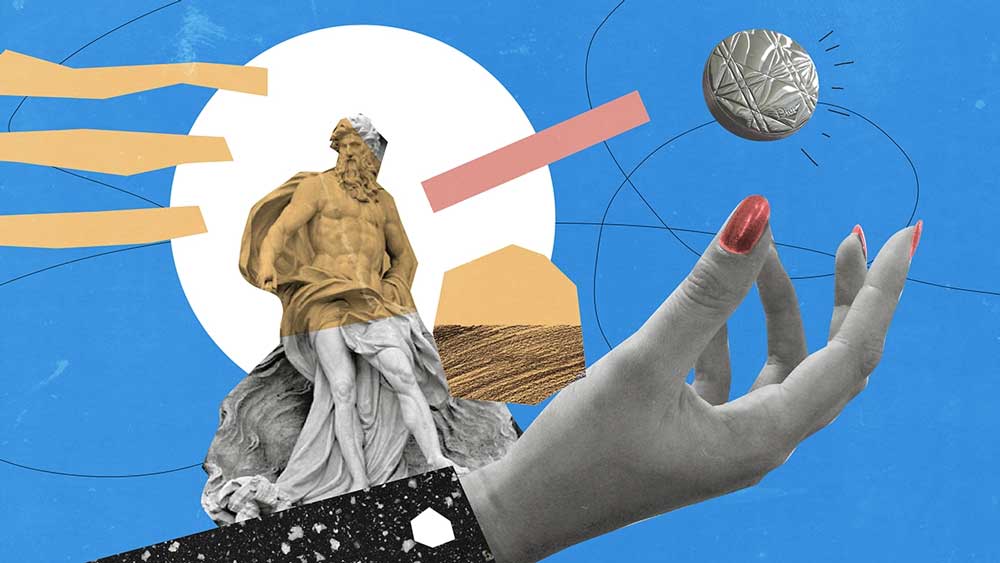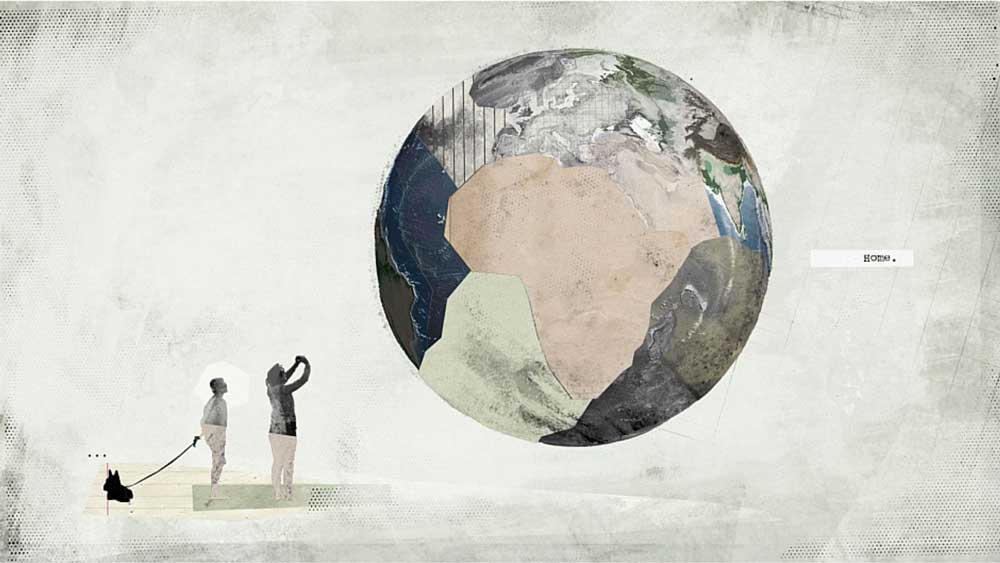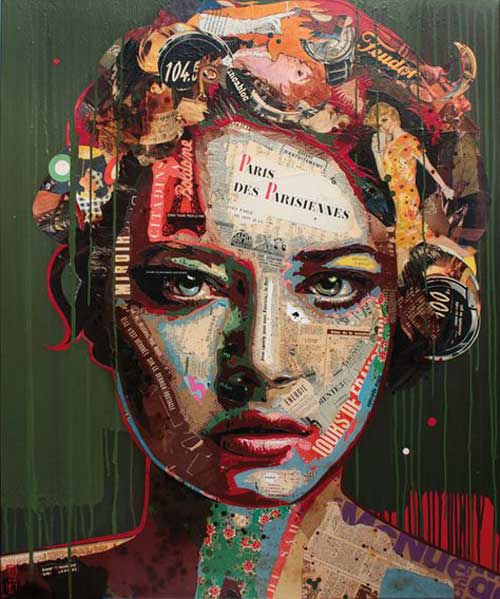3D and Mixed Media Graphics: The Dynamic Future of Graphic Design

Graphic design is constantly evolving, and as we venture deeper into the digital age, designers are embracing new technologies and techniques to create more immersive, engaging visuals. One of the most exciting trends in 2025 is the rise of 3D and mixed media graphics, a dynamic combination of real-world textures, digital illustrations, and interactive elements. This trend is revolutionizing the way we experience design, pushing the boundaries of creativity and offering endless possibilities for designers to explore.
3D and mixed media graphics break free from traditional two-dimensional design by introducing depth, motion, and even tactile qualities. These techniques bring an element of realism, richness, and texture that enhances visual storytelling. In this blog post, we’ll dive into the fascinating world of 3D and mixed media graphics, exploring why they’re gaining popularity, how to effectively use them in your designs, and real-world examples of their impact. Plus, we’ll provide tips on how to incorporate these techniques into your own work to stay ahead of the curve.
What Are 3D and Mixed Media Graphics?
At its core, 3D graphic design refers to the creation of visual elements that have depth and volume, simulating a three-dimensional appearance. Unlike traditional flat, 2D graphics, 3D designs add layers of realism through the use of shadows, lighting, textures, and perspective. These graphics often appear lifelike and can be manipulated in real time, making them ideal for use in digital environments, games, animations, and advertising.
Mixed media, on the other hand, refers to the combination of different artistic mediums and techniques in a single piece of work. In the world of graphic design, mixed media often involves combining traditional elements like hand-drawn illustrations, photography, and collage with digital techniques such as 3D rendering, CGI, and animation. The fusion of these diverse elements results in visually complex, unique designs that capture attention and convey a sense of depth and movement.
Together, 3D and mixed media graphics offer designers a wealth of tools to craft more engaging, dynamic, and multifaceted designs. The versatility of this trend allows for endless creative expression, from hyper-realistic renders to abstract, conceptual works that defy the constraints of traditional design.
Why 3D and Mixed Media Graphics Are Gaining Popularity
As the digital landscape continues to evolve, 3D and mixed media graphics have gained momentum due to several key factors:
- Technological Advancements: The availability of more powerful software tools, such as Blender, Cinema 4D, and Adobe Dimension, has made 3D design more accessible to a broader range of designers. These tools allow for faster and more efficient creation of 3D elements and mixed media compositions.
- Enhanced User Experience: With the rise of augmented reality (AR) and virtual reality (VR), 3D and mixed media graphics are essential in creating immersive environments. These graphics enhance user interaction by adding depth and realism to digital experiences, from websites to video games.
- Increased Demand for Visual Impact: In an age of information overload, designs that stand out are crucial for capturing attention. 3D and mixed media graphics create stunning, memorable visuals that cut through the noise, making them an attractive option for brands and content creators aiming to differentiate themselves.
- Versatility Across Platforms: These graphics are perfect for a range of digital platforms, from websites and mobile apps to social media posts and advertising campaigns. The ability to create designs that work across various mediums—whether static, animated, or interactive—has made 3D and mixed media graphics indispensable in modern graphic design.
The Impact of 3D and Mixed Media on Graphic Design
The integration of 3D and mixed media graphics has fundamentally changed the way designers approach visual storytelling. Here are a few key ways in which these techniques are transforming the design landscape:
- Immersive Visuals: 3D elements, such as product renders or digital spaces, can engage viewers in ways traditional 2D graphics cannot. They allow for more dynamic visuals that can be viewed from multiple angles or used interactively, drawing users into the experience.
- Creative Freedom: Mixed media encourages designers to think outside the box and experiment with different techniques. The ability to combine real-world elements with digital designs opens up new creative possibilities that were previously unimaginable. Designers can seamlessly merge photography with illustration or integrate hand-drawn elements with 3D models, allowing for fresh, innovative design solutions.
- Branding and Identity: The unique, visually striking nature of 3D and mixed media graphics makes them an excellent choice for establishing strong brand identities. Brands are using these graphics to create memorable, distinct visuals that represent their values and connect with audiences on a deeper level.
- Storytelling Through Motion: Animation is an essential component of mixed media, and combining 3D graphics with motion allows for storytelling in a more captivating way. This dynamic element brings designs to life, whether through a short advertisement, a product demo, or an interactive user experience.
How to Incorporate 3D and Mixed Media into Your Designs
Incorporating 3D and mixed media graphics into your designs requires both technical skill and creativity. Here are some tips to help you get started:
- Start with Simple 3D Elements: If you’re new to 3D design, start by experimenting with simple shapes and objects. Many 3D programs offer templates and beginner-friendly tools that make it easy to incorporate 3D elements into your designs without needing extensive technical expertise.
- Blend 3D and 2D Designs: To create more dynamic designs, try blending 3D elements with 2D illustrations or photographs. This can be done through compositing techniques, such as layering and masking, to combine different mediums seamlessly.
- Use Motion to Enhance Depth: Adding movement to your 3D designs can enhance their impact. Consider animating key elements or using subtle motions like camera pans, zooms, or rotations to create a sense of depth and keep your audience engaged.
- Experiment with Textures and Lighting: The key to creating realistic 3D designs lies in the textures and lighting you use. Experiment with different materials—such as metallics, glass, or organic textures—and adjust the lighting to highlight important elements of your design.
- Create Interactive Experiences: For web design, consider using 3D and mixed media to create interactive content. Interactive elements like clickable 3D models, scrolling animations, or VR experiences can make your design more engaging and memorable.
Case Studies: Successful Use of 3D and Mixed Media Graphics
Apple:
Apple’s product ads often use 3D graphics to showcase the sleekness and functionality of their products. Their use of subtle animations, coupled with realistic textures, creates a modern and premium feel that matches their brand’s identity. Their 3D rendering techniques are highly polished and interactive, often used in product launch videos to highlight product features dynamically.
Nike:
Nike has embraced 3D graphics to create visually compelling advertisements and product renders. Their campaigns often incorporate mixed media, using 3D elements alongside dynamic photography and animation to tell a story. These graphics are not just attention-grabbing but also convey a sense of motion and energy, aligning with Nike’s brand ethos of athleticism and strength.
Coca-Cola:
Coca-Cola’s use of 3D and mixed media in their advertisements, especially around the holiday season, is a prime example of how vibrant, layered designs can amplify brand storytelling. The integration of 3D effects, coupled with hand-drawn elements and animation, makes the brand feel both modern and nostalgic at the same time.
How You Can Apply This Trend in Your Work
If you’re a designer looking to incorporate 3D and mixed media graphics into your work, consider the following:
- Embrace Digital Tools: Familiarize yourself with tools like Blender, Cinema 4D, and Adobe Dimension to start experimenting with 3D design. Don’t forget about mixing these tools with traditional design techniques, such as drawing and photography.
- Start Small: Begin by integrating a single 3D element into your existing designs, like a 3D logo or a small product render. Gradually build your skill set and explore how you can combine these elements with your current design process.
- Stay Creative: Mixed media allows you to combine styles and mediums freely, so don’t be afraid to break traditional design rules. Combine 3D objects with hand-drawn textures, photography, and digital painting for a unique and personal touch.
- Use It to Tell Stories: 3D and mixed media graphics are perfect for storytelling, especially in advertising and branding. Use these techniques to create a narrative around your brand or project, whether through animation, layered imagery, or interactive elements.
Conclusion
The rise of 3D and mixed media graphics is transforming the world of graphic design, offering a wealth of creative possibilities for designers. With their ability to captivate audiences, tell powerful stories, and push visual boundaries, these techniques are becoming indispensable in today’s design landscape. Whether you’re creating a digital advertisement, an interactive website, or a product render, 3D and mixed media are tools that can help elevate your work and set you apart from the competition.
By embracing this trend, you’ll not only stay on the cutting edge of design but also open the door to endless opportunities for innovation and creativity.
References
Harrison, J., 2024. The Future of 3D Design: Exploring Its Impact on Graphic Design. Design Vision, 56(1), pp. 34-47.
Smith, K., 2023. Mixed Media in Digital Design: Breaking Boundaries. Graphic Design Journal, 30(4), pp. 58-72.
Apple, 2022. Apple Product Campaigns: A Look into 3D Rendering and Visual Storytelling. Available at: www.apple.com [Accessed 2 March 2025].
Nike, 2023. Nike’s Use of 3D Graphics in Branding and Advertising. Available at: www.nike.com [Accessed 2 March 2025].





